personalities
8:38 PM
Padmashree Chaturbhuja Meher – Draping the nation with his ikat fabrics
“Om Sai
Ram”
In post
independence era though Odisha could not make a farm base in handloom textiles
as compared to the magnitude of the states like Rajasthan, Gujrat or Uttar
Pradesh, but at individual level over here we got world’s finest craftsmen. It
is Padmashri Chaturbhuja Meher who stands apart from the rest of the weavers
for the past six decades. He is the pioneer of ikat handloom revolution of
Odisha. He hails from Sonepur district of Odisha. He was born to a Meher’s
family of Bhulia community in the year 1935 at Sonepur. Chaturbhuja Meher had a devastated childhood. At the tender age of
barely nine years his mother left for the heavenly abode. Soon after, his
father was bed ridden with paralysis, waist downward. His family lived under
abject poverty. But his father never wanted to surrender to the given
circumstances of his life. Neither he begged a Rupee or a morsel of grain from
any of his relatives. He worked while being laid on his bed. Chaturbhuja as a
kid used to assist his father to cut the yarn. By the time he turn eleven years
his father too expired. He grew under the shelter of one of his uncle Golek
Meher. Chaturbhuja did not had the privilege to attend even a primary school. He
learnt the alphabets of Oriya in a black-slate with a chalk piece from a
teacher living next door. It was not only the childhood, but the entire life of
Chaturbhuja Meher at every stage was a saga of difficulties and his struggle to
survive it.
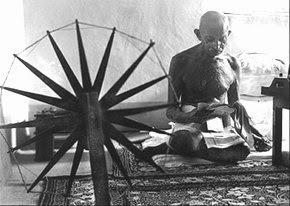 |
| [Mahatma Gandhi with his spinning wheel] |
Chaturbhuja
as a kid was greatly influenced by the Quit India Movement. He followed the
words of Mahatma Gandhi “kuti khao, kati pindha”. That means, one should
grind the grains on his own self to eat his food, on the other hand he should
cut the yarn to wave his cloth. Gandhiji asked the mass to observe this simple
principle to make the nation self reliant and to free it from the clutches of
imperial British. Chaturbhuja went to assist the weavers in his village. He
undertook the job of doing the kumbha or the pots design on kapta. Until the pre-independence era of India
“kapta” was wore by the women of Western Odisha. A kapta was a women wardrobe that was shorter
in width and wore from loin to the length of the knee. Chaturbhuja was
earning a meager Charanna or 25 paisa i.e. one quarter of a Rupee in two
days to accomplish the job. As on this date a kid won’t even get an orange
candy with this meager 25 paisa.
Chaturbhuja believes on the existence of the almighty,
without whose wish nothing going to happen. He recounts a celestial event while
he was a young man. After the arduous work of farming and milking the cows in
the shed, one day he was working on his handloom till late night in a low luminosity
with the help of a kerosene lantern. It might be one past mid night, there
appeared three ladies at the door. They asked for the where about of Kali
Patra, the person who migrated from Berhampur and settled over at Sonepur. Even
without a thought he showed the finger toward the road to walk ahead. When the
ladies left it strike his mind, how does these ladies came from the other part
of Odisha at the dead of the night, even when there run no buses. He got up
from his seat and went to street and looked. Lo and behold the narrow road was
empty. There was no trace of those three ladies. He went to his bed with a
puzzle state. Next day morning he woke early and went to the home of Kali Patra
to enquire. But Kali told nobody reached his home last night. Then Chaturbhuja
started feeling uneasy thinking it to be a nightmare. But Kali Patra consoled
him saying, how fortunate you are. He told in the Patra Sahi there is a Budhima
goddess temple and in the night hours heavenly bodies roam on the street. And
from that day onward the life of Chaturbhuja Meher has been stable and he
progressed phenomenally in his vocation of ikat handloom weaving.
[a tribal design of Odish on single ikat]
Barely at
the age of eleven years during 1945 he started working at the Sonepur Weaving
Factory. It was a project which has been set up by the erstwhile king of
Sonepur Late Sudhanshu Sekhar Singdeo to generate the employment avenues. After
the constitution of republic of India in the year 1956 along with other weavers
he setup Ramoji Weavers Cooperative Society at Sonepur. For long two years he
hold the position of the Chairman as a honorary, without any basic
remuneration. He had to work in the society as a worker for two to three hours
to get the daily wage.
[Shrusti fira firbi wall hanging]
In the year
1956 with the recommendation of cultural stalwart Pupul Jaykar the Government
of India formed All India Handloom Board (AIHB). This Gujrati lady was the
cultural ambassador of India and a close compatriot of the then Prime Minister
of India Late Indira Gandhi. Under this Board they setup Weaver’s Service
Centres (WSC) one at Calcutta and the other at Bombay. In the year 1959 our bunakar
Chatturbhuja Meher joined the Calcutta office as a Grade-II weaver at a basic
remuneration of Rs.160 a month. The objective of setting up of these WSC’s are
to develop new designs and to provide them to cooperative societies nationwide
for production. Later he got transferred to its Mumbai and Imphal offices as
well. While working in other states Chaturbhuja acquired the techniques and
methods used by those weavers, on the other hand he dissipated the hereditary knowledge
that he possessed. He had given his
best efforts to sketch new designs on paper and developed those designs on to
the fabrics. While serving in other states, he had the inner urge to return to
his birth place and contribute his knowledge for the growth and prosperity of
his community and the state.
[Chandra Balikunja silk saree]
Chaturbhuja
though a virtual ill-literate person, but he had a great vision to accomplish.
Unlike his fellow weavers he did not want to restrict himself to the job of weaving
handloom fabrics just to make a living. Early
in life he had seen famine, unemployment and deaths of the poor fellow beings in
Odisha. Then weaving industry has been largely restricted to the echelon of the
Bhulia community. To eradicate the poverty and hunger deaths of his villagers he
wanted to create employment avenues for them. By breaking the age old social
norms of this region he employed the un-touchable poor Schedule Caste and
Schedule Tribe people. Irrespective of caste and creed, he trained the
untouchable people to weave the cloths and later on employed them in his
weaving unit. And brought these lesser fortunate people to the main stream of the society. This man
turn out to be the greatest social entrepreneur we ever had in Western Odisha,
as thousands of families got sources of livelihood and succour to support their
families. Later on he worked under the aegis of Late Padmashree Krutartha
Acharjya of Bargarh during the initial stages of setting up of Sambalpuri Bastralayas.
Being a Bhulia himself Chaturbhuja was
armed with the in-depth knowledge of products and its production. Immensely he contributed
his knowledge for the growth of this apex institution to this stage.
So far this
grand old man of Indian handlooms has innovated a large number of new designs
and motifs. His hand woven fine count Bichitrapuri and fine Bomkei saris able
to create an niche in the market. These
saris became widely popular in the state and the nationwide.
[standing at the entrance of Bayana Bihar]
In the year 2000 he set up one of the biggest Handloom
Park of Odisha called “Vayana Vihar” at village Manamunda in Sonepur District
of Odisha. It’s a massive handloom research and development centre where
hundreds of unemployed youths are being imparted with training and later on
employed irrespective of caste and creed. Vayana Vihar has been equipped with
100 highly furnished modern looms. Separate departments for winding, tying,
dyeing, sizing, weaving, drawing, designing are being managed over here. In Odisha he is the first person to modernise the traditional
handlooms by fixing the sophisticated modern gadgets like jacquards to
streamline and maximise the production of fabrics. It has got a sophisticated research and training wing
as well.
 |
| [a model in double ikat saree] |
Vayana Vihar, his brain child at Manmunda, Sonepur
turn out to be an important pilgrimage centre for all those ikat handloom
devotes who got the curiosity to know about this ancient technique of handloom
weaving. Often day buyer’s and tourists from the world over throng to this
little town. And those of you who can’t afford time to come Sonepur may check
his outlet Meher’s Collection at Shriya
Square, Bhubaneswar. This outlet was set up by his second son Shankar
Meher. While his elder son Palasty Meher looks after the production at
Manmunda.
[Mehers Collection, Sriya Square, Bhubaneswar]
And all this has been done by someone who is virtually
an illiterate person. It needs a great spirit of enterprising skills to
build-up the business of this magnitude. Even a pass-out of MBA from a premier
university will not be able to manage the business of this short, because till
date handloom sector in Odisha is largely un-organized.
The art
that has been hidden in someone, over the time comes to the surface in terms of
the skill. In return it brings recognition. In the year 2005 he has been
bestowed with one of the highest civilian Award of Government of India i.e.
Padmashree. This coveted award is given to the citizens of India for the
exceptional performance in the fields of arts, education, literature, science, sports, medicine, industry, social service and public
affairs. Apart from this he has been honoured
with the title of Shilp Guru by the Govt. of India in the year 2006. This award
is conferred by Govt.
of India to the master craft persons for the highest level of quality
and skill in the traditional Indian Handicrafts.
Roti, kapda and makan (food, cloth and shelter) are the three
vital needs of life. Out of these the kapda or the cloth for which the
life of Chaturbhuja Meher stands for.
His life is a mission with sole objective of development of handloom industry
of India.
------------------------------
PS : You may ask
this writer [E.Kiran Mohan] to make your travel plan and guide you to Manmunda,
Sonepur in case you want the help. You may check the related topics at :
Ikat Tour of Barpali by a French Lady
 |
| [Alpana - single ikat saree in silk] |
 |
| [Barada Budha - extra weft wall hanging in silk] |
 |
| [Boita Bandana - single ikat saree in silk] |
 |
| [Boita Bandana - single ikat wall hanging] |
 |
| [Chakra Bandha - single ikat saree] |
 |
| [Dasphulia : single ikat saree in silk] |
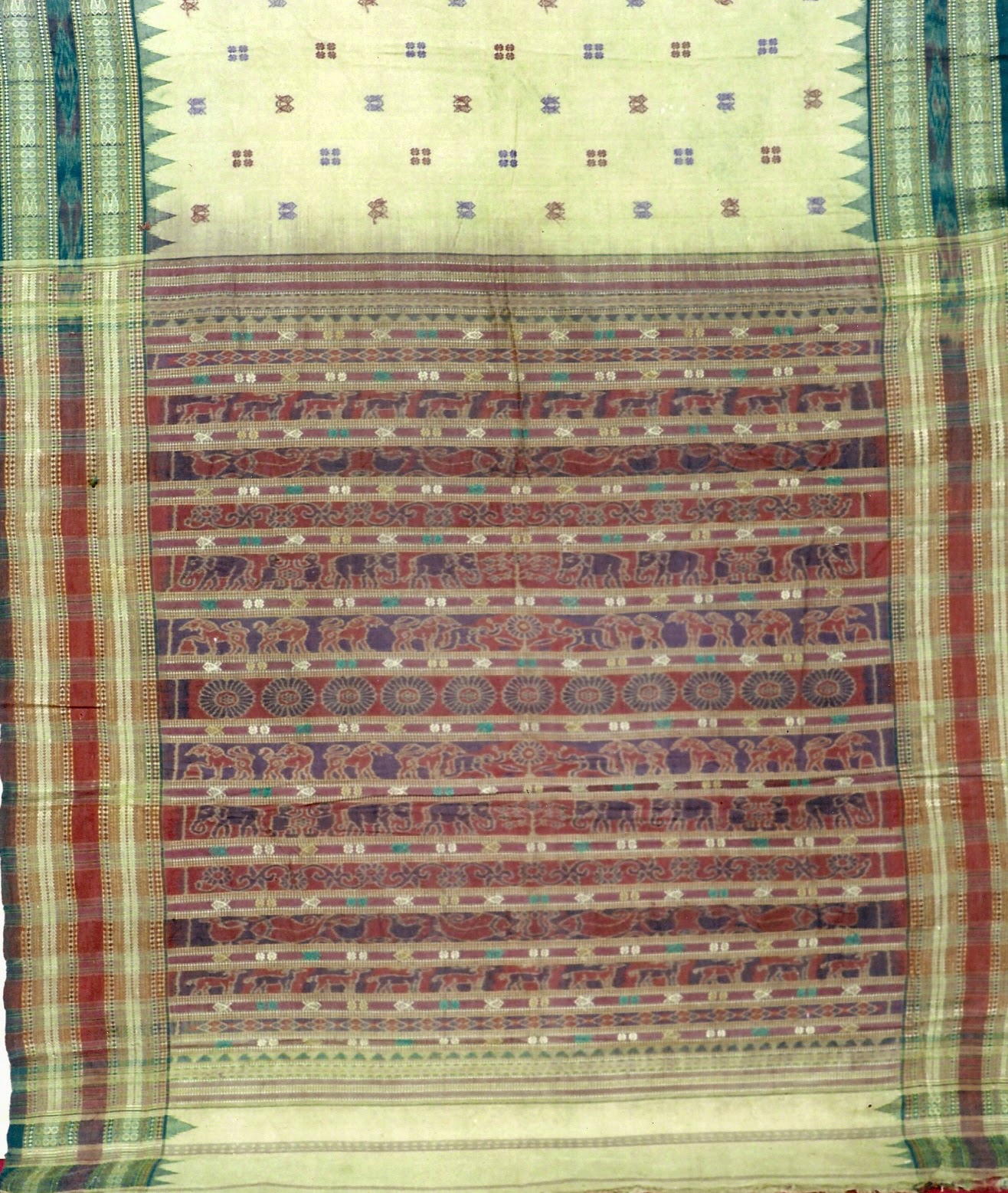 |
| [Dasphulia : single ikat saree in tassar] |
 |
| [Double ikat saree in blue] |
 |
| [Double Tree - ikat saree] |
 |
| [Flower Vase : fira firbi silk saree in black] |
 |
| [Flowering Tank : fira firbi yellow saree in silk] |
 |
| [Jhuti : single ikat saree in cotton] |
 |
| [Konark : single ikat wall hanging] |
 |
| [Kunja Kumuda : single ikat silk saree] |
 |
| [Lakshmi Puja : ikat saree in silk] |
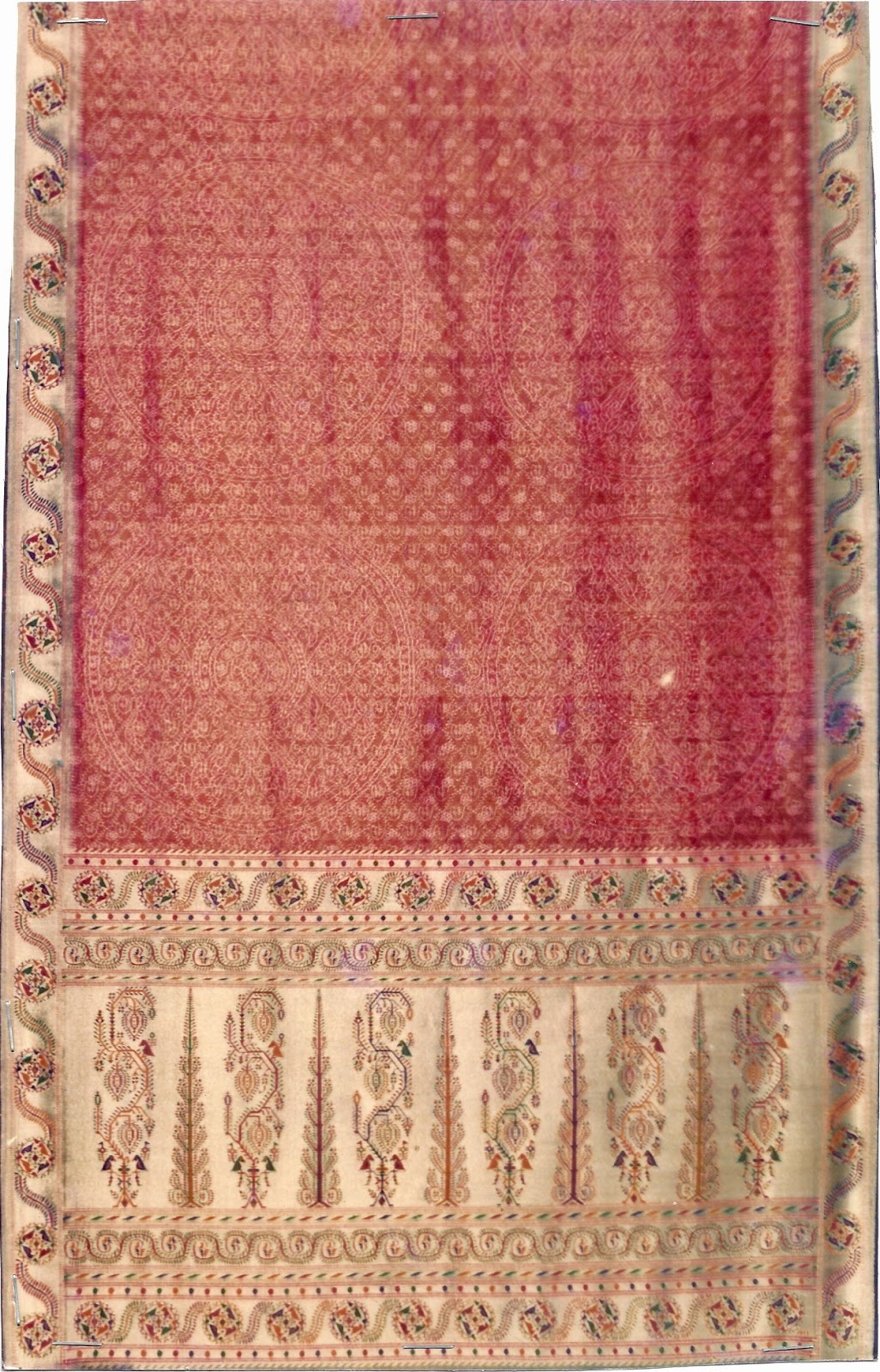 |
| [Lalita Kunja : single ikat saree in silk] |
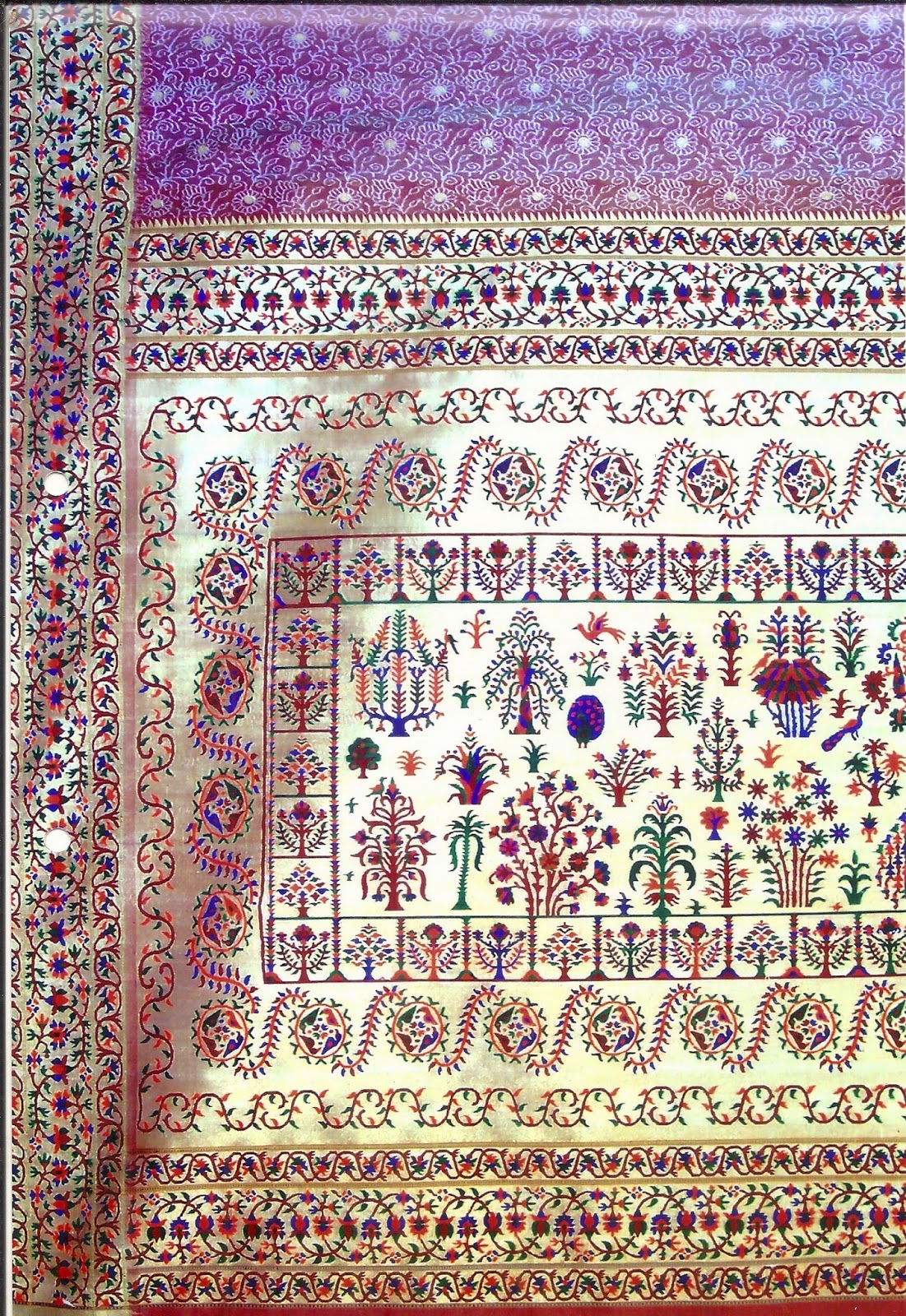 |
| [Radha Kunja : a fira firbi saree in silk] |
 |
| [Sampurna Bruksha : a single ikat wall hanging] |
 |
| [Sapta Bruksha : a single ikat saree in silk] |
 |
| [Saptaparni : a single ikat saree in silk] |
 |
| [Sindhu Kanya : a single ikat saree in silk] |
E.Kiran
Mohan
C/o.Dr.E.R.Rao
(MD)
Tehsil
Chowk,
At/PO.
BARPALI – 768 029
Dist.
Bargarh, Orissa, India
Cell #
91-99-371-20565
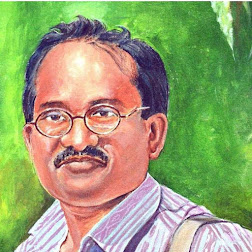

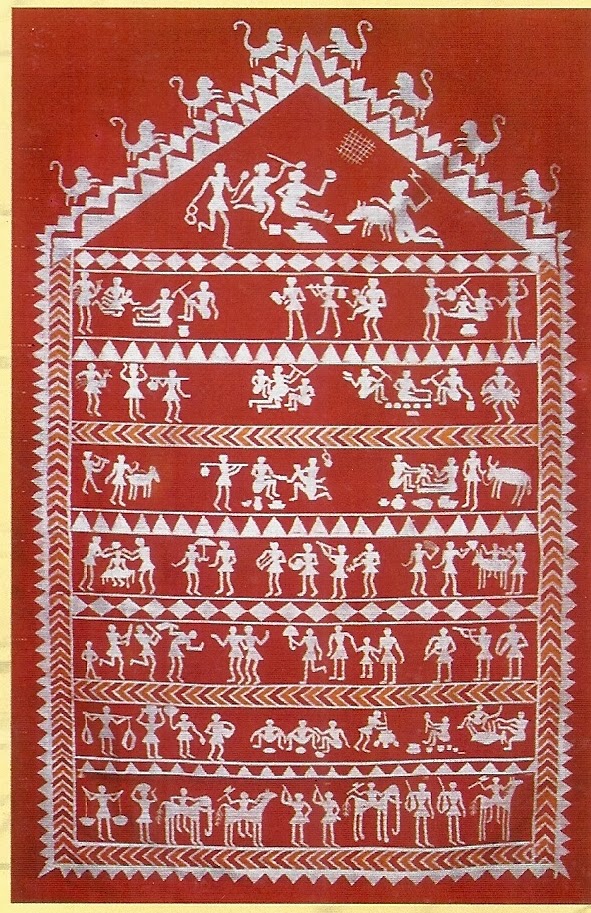









![EKUSIA [ଏକୁସିଆ]](http://2.bp.blogspot.com/-IVkk6zhpWdY/UDDbYrQcj3I/AAAAAAAABP8/d0814kzOx4Q/w72-h72-p-k-no-nu/Ekusia.jpg)

